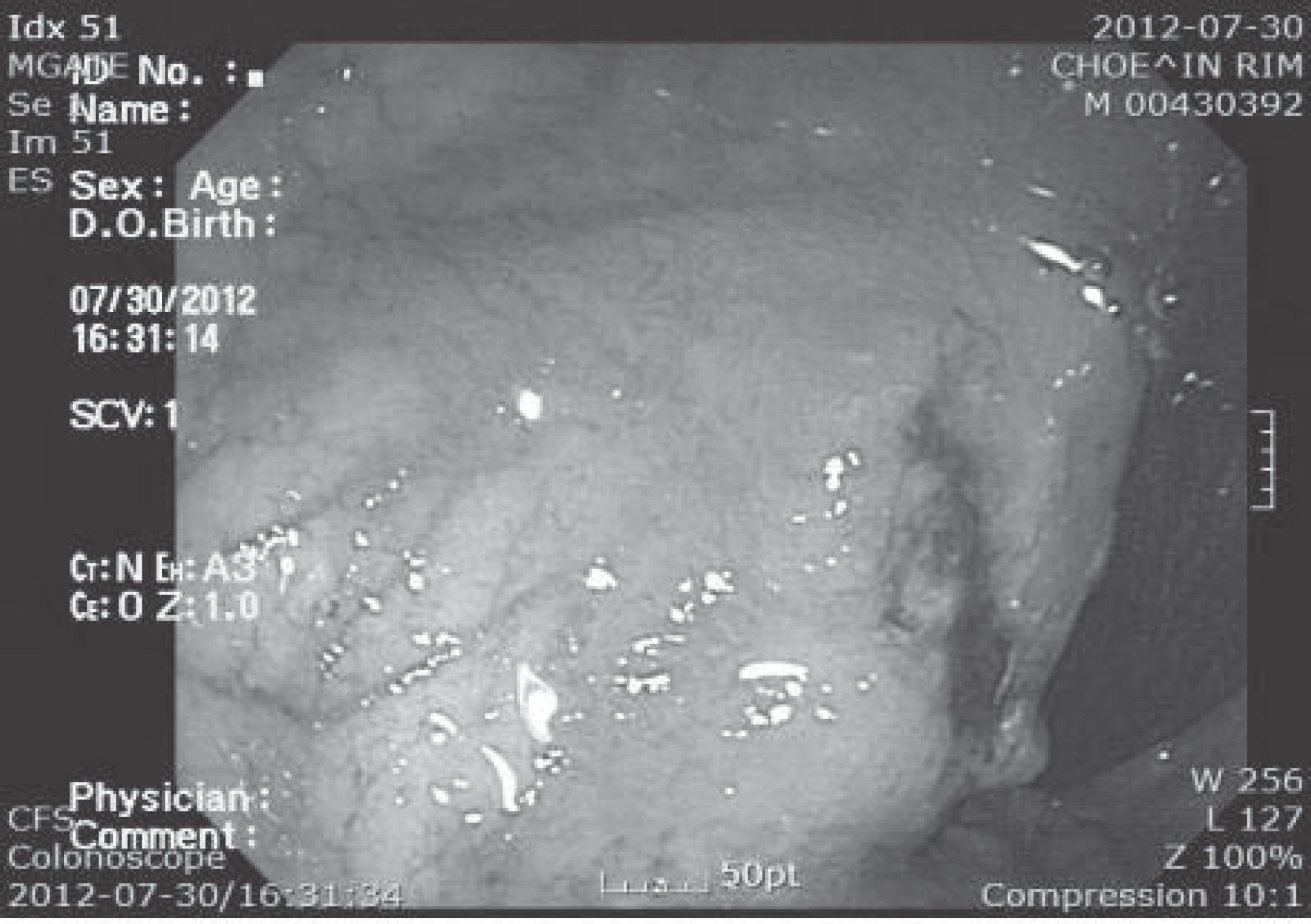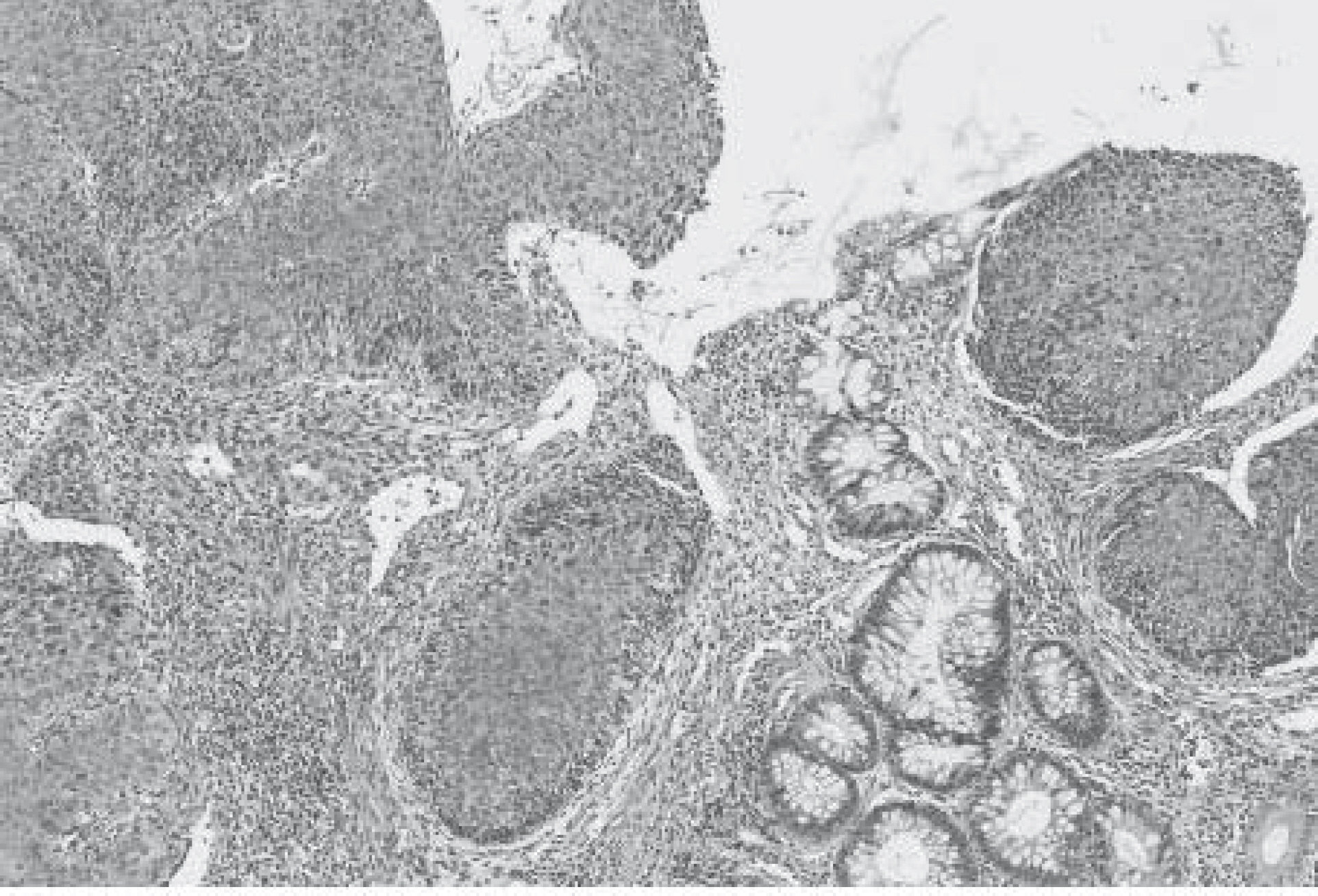A Case of Rectal Squamous Cell Carcinoma Mistaken for Rectal Adenocarcinoma
Article information
Abstract
Abstract
We report a case of anal squamous cell carcinoma extended to the rectal mucosa that was clinically mistaken for rectal adenocarcinoma and literature reviwed. Sigmoidoscopic finding showed spherical shaped elevated lesion with central ulceration, interpreted as rectal adenocarcinoma in the distal portion of rectum. Anal squamous cell carcinoma is very rare among gastrointestinal cancer. Pathological study of the biopsy specimen demonstrated squamous cell carcinoma and normal rectal glands. Sigmoidoscopic finding of the presented case showed the ulcerarive lesion contineuosly extended from anal verge upward to the rectum. We postulate that the presented case is primarilly originated from the anal squamous cell carcinoma extended proximally to the rectum. Immunohistochemical stain(p-63) of the biopsy specimens showed squamous cell carcinoma. This patient has been completely recovered after treartment of chemoradiation and trans-anal excision. We present a case of anal squamous cell carcinoma invading rectal mucosa clinically mistaken for rectal adenocarcinoma and literature reviewed.


